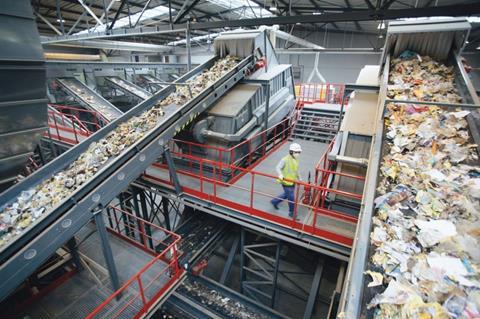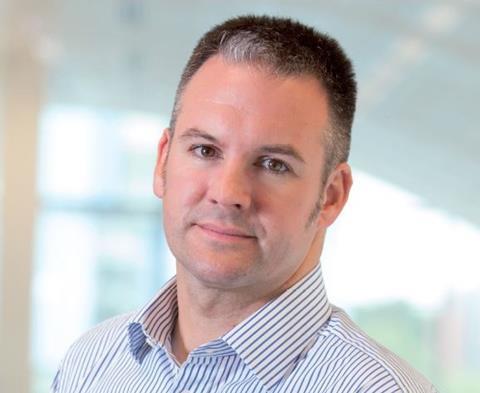On 26th September at the PPMA Show Packaging Europe’s Tim Sykes will be chairing a session with Dr Forbes McDougall, Veolia’s head of Circular Economy and previously head of global waste at P&G, on sustainable food and drink packaging and the circular economy. The two caught up for an interview ahead of the show.
Tim Sykes: What do you consider the key packaging challenges in relation to realising a circular economy?
Forbes McDougall: This was summarised well by the Ellen MacArthur Foundation: A key challenge will be going from efficient to effective packaging. It is unrealistic to demand that the tail wags the dog – we cannot demand that only certain packaging materials or components are being used. However, we need to strike a balance between packaging that functions well throughout the supply chain and at end of life. Combining the development of effective packaging with material capture at consumer level is a huge challenge.
TS: Where are the biggest recent and coming advances in recycling technology?
FMcD: A major driver for advances is the fact that sorting technologies are getting better and better. At the PPMA session, I will be showing videos demonstrating this. The fragment size of sortable pieces is getting smaller and smaller. Automated sorting is key, as it can treat a large volume of materials. There are lots of cool technologies emerging, addressing the recycling of niche materials, but it’s important to acknowledge that not everything is viable, and demand for some materials is limited. For the biggest impact, we need to focus on the technologies that deliver volume. Automation is going to have a big impact, particularly when recycling high value goods and precious metals, for example when applying robotics for tv recycling.
TS: Are there situations where packaging falls short of where it could be from a recyclability point of view?
FMcD: In the current climate with the circular economy moving up policy agenda, I’d say that any packaging that can’t be recycled is a failure. Of course, I recognise the benefits of lightweight packaging protecting and preventing waste. It is still a success from a packaging point of view, but from a system point of view, if we cannot capture or recover it, it’s a failure. Multi-layer materials that cannot be identified by optical sorters are also a challenge. Materials can end up contaminating a bale of food quality material, and we have to work on optimisation. Furthermore, while we might be able to recover a material, if there isn’t a market for that recycled material afterwards, there’s no value in recovering it.

TS: Are there any types of packaging or any packaging materials where you can see potential to significantly increase recycling rates?
FMcD: It wouldn’t be fair to say that the industry isn’t doing well enough. Shortcomings tend to come down to systems rather than individual stakeholders, and how materials move through collection, sorting and recovery systems. Consumer behaviour can also pose a challenge. We are working on new systems for the public to capture coffee cups. In order to improve recycling, big manufacturing shifts, for instance either moving away from multi-material products or ensuring that multi-materials can be dismantled and are recyclable, would help, but there is very little progress there at the moment. New packaging materials with better properties than existing materials could be a solution.
TS: Within the packaging value chain, a lot of R&D effort goes into ensuring recyclability. At the same time, there’s a lot of talk about the need for better infrastructure: more regionally consistent collection and recycling. What is your take on this? What roles do the respective stakeholders need to play?
FMcD: The task is too big for one sector to solve on its own, so everybody needs to get together. Coming back to ‘circularity’, everybody doing their own thing can lead to problems. The system in the UK and in Europe is fragmented. We need to review what works well and rearrange, without causing too much disruption. We need to map out the big picture and find sensible ways to deploy it. Clear discussion and central coordination is key, talking to all players involved all the time.
TS: Do we need to develop new business models to underpin growth in recycling? And who takes the lead in realising these?
FMcD: This is very important. In Leeds, we operate an energy recovery system, and recycle an extra ten per cent of black bag waste to extract more value prior to incineration. We capture dirty paper, wash it and use our own pulper to process it. We found a customer, a manufacturer of medical devices, who uses the recovered material for sick bowls in hospitals. There are many opportunities for creating new circular solutions. The challenge can sometimes be to find customers for recycled materials. We recently acquired a closed loop HDPE recycling facility in Dagenham, and have increased the amount of recycling available, but it is a challenge to find customers to consume the volume created.
TS: How do you view the EU’s Circular Economy Package? Is it an effective vehicle to stimulate change?
FMcD: The Circular Economy Package has certainly boosted the interest in the circular economy, and there was a jump from where we were in sustainability discussions and the frame work. It created as a huge change in mindset, trying to embrace many parts of the economy. It is a move in the right direction, but not yet the finished article. It is early days, a good starting point but it will require a lot of further debate.
TS: How do you relate these issues to supply chain security?
FMcD: Let’s take the example of precious and rare earth metals. None of these originate in Europe. Everything that drives our technology comes from countries such as China, Latin America or Russia. The only reliable source of these materials we have available in Europe is from recycling. With projected price increases, seen in the context of the growing middle classes in China and India, who will want the same technology we have, prices are going to increase. Therefore, international brands are looking to increase the amount of recycled content in their products. Where are they going to get it from? The more forward-thinking companies are already talking to the owners of these resources – waste management companies or municipalities. If you’re slow off the mark, you will struggle. Virgin materials will still be available, but you need to know where material is coming from well in advance. Historically recycled materials have been supplied on short-term contracts, favouring buyers. If a material becomes scarcer, this will favour resource management companies. Competition for resources will cause change, and we will start to see the emergence of longer-term contracts.
Register for free to attend Forbes McDougall's talk and other sessions at the PPMA Show Learning Hub here.












